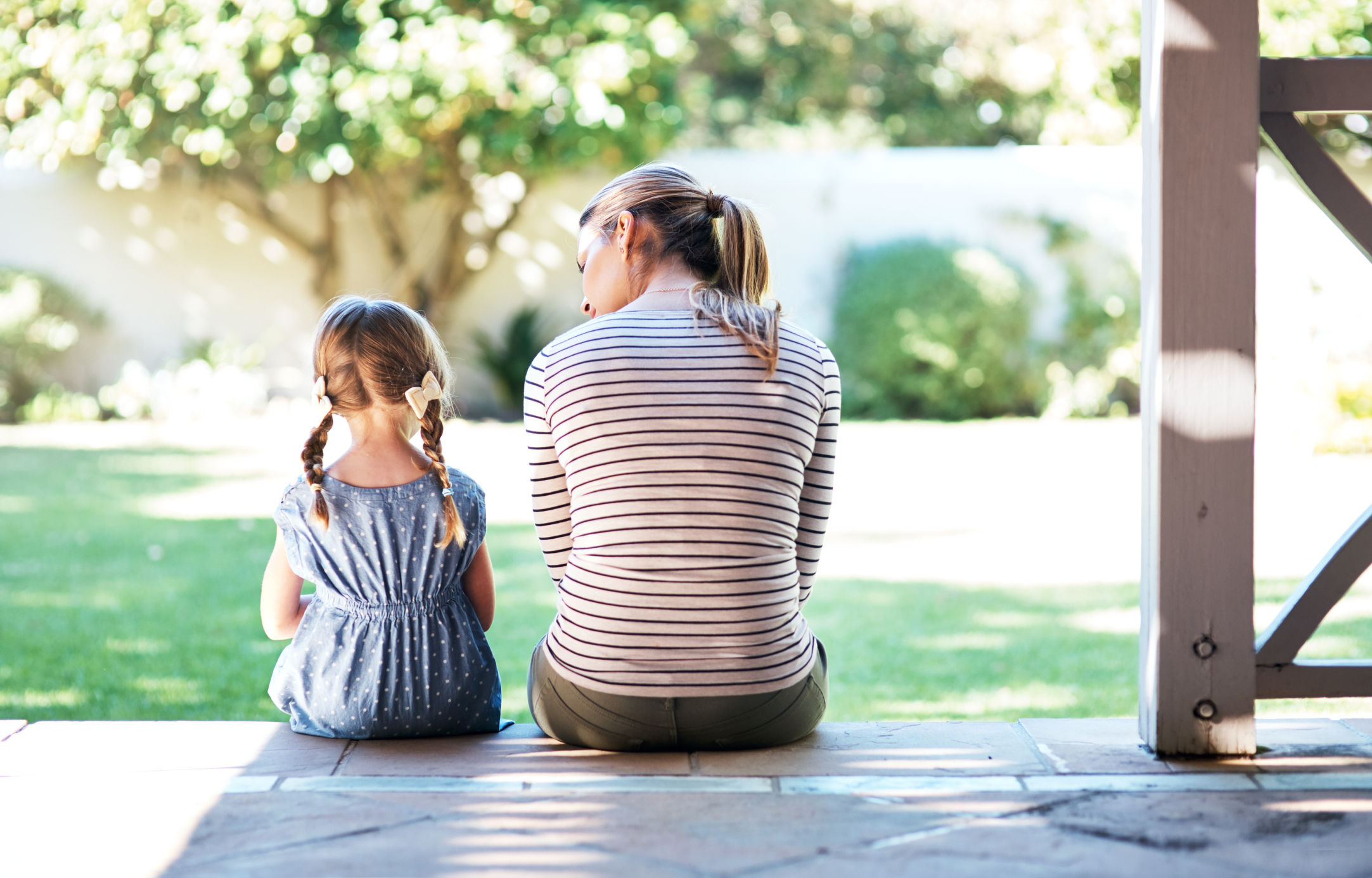As parents and caregivers, we are constantly faced with the challenge of understanding and deciphering the behaviour of the children in our lives. Sometimes, their actions may seem baffling or even frustrating, leaving us wondering what is truly going on inside their young minds. However, the key to unravelling the mystery behind a child’s behaviour lies in the power of observation.
Observation is a powerful tool that allows us to gain insights into a child’s thoughts, emotions, and needs. By keenly observing their behaviour, we can begin to decode the underlying meaning behind their actions. Are they acting out because they are seeking attention? Are they expressing their frustrations or fears through certain behaviours? Through observation, we can uncover the hidden messages behind their actions and provide the support and guidance they need.
In this blog post, we will delve into the importance of observation in understanding child behaviour. We will explore various techniques and tools that can enhance our ability to observe effectively. From decoding common behaviours to understanding the role of context, we will discuss how observation can help us identify the needs and issues that lie beneath the surface.
But observation is not just about understanding. It is about taking action and applying our insights to support a child’s development. We will discuss how observation can guide our parenting strategies, help us collaborate with child development professionals, and create an environment that fosters healthy behaviour.
To bring these concepts to life, we will also present real-life case studies that demonstrate the practical applications of behaviour observation. From understanding aggressive behaviour to navigating shyness and social anxiety, these case studies will showcase the power of observation in action.
So, join us on this journey as we explore the power of observation and unlock the hidden meanings behind a child’s behaviour. By honing our observational skills and applying our insights, we can truly make a positive difference in the lives of the children we care for. Let’s embark on this enlightening exploration together.
Understanding the Importance of Observation in Child Behaviour
Observation plays a pivotal role in understanding child behaviour. It allows us to gain valuable insights into their thoughts, emotions, and needs. By keenly observing their actions, we can uncover the underlying meaning behind their behaviour, enabling us to provide appropriate support and guidance.
One of the primary reasons why observation is important in understanding child behaviour is that it helps us move beyond the surface level. Children may not always have the ability to articulate their feelings or thoughts, especially at a young age. Observation allows us to bypass their limited verbal communication skills and gain a deeper understanding of what they are experiencing.
Furthermore, observation helps us to recognize patterns and identify triggers that may be influencing a child’s behaviour. By observing consistently over time, we can establish connections between specific behaviours and their corresponding situations or events. This knowledge is crucial in determining the root causes of certain behaviours and addressing them effectively.
Observation also provides us with an opportunity to validate a child’s feelings and experiences. By attentively observing their behaviour, we show them that we are present and attentive to their needs. This validation helps to build trust and strengthens the bond between the child and caregiver.
Moreover, observation allows us to identify and celebrate a child’s strengths and achievements. By closely observing their actions, we can recognize their unique abilities and talents. This recognition boosts their self-esteem and encourages them to continue developing and exploring their strengths.
Observation is not just limited to individual children; it also extends to their interactions with others. By observing how children interact with their peers, siblings, or other adults, we gain insights into their social skills and emotional intelligence. This understanding enables us to support them in developing healthy relationships and effective communication skills.
In summary, observation is of paramount importance in understanding child behaviour. It helps us move beyond surface-level actions and uncover the hidden meanings behind their behaviour. By recognizing patterns, identifying triggers, and validating their experiences, we can provide the necessary support and guidance for their healthy development. Through observation, we can truly connect with children on a deeper level and foster their overall well-being.
Learning to Observe: Techniques and Tools
Observation is a skill that can be honed and developed with practice. In this section, we will explore various techniques and tools that can enhance our ability to observe effectively. By utilizing these tools and techniques, we can gather meaningful information about a child’s behaviour and gain deeper insights into their thoughts, emotions, and needs.
Why Observation is Key in Understanding Child Behaviour
Before delving into specific techniques and tools, it is important to understand why observation is crucial in understanding child behaviour. As mentioned earlier, children may not always have the ability to articulate their feelings or thoughts accurately. Through observation, we can bridge this communication gap and gain a clearer understanding of their experiences. By observing consistently over time, we can identify patterns, triggers, and underlying causes of certain behaviours. This knowledge allows us to respond appropriately and provide the necessary support and guidance.
Tools for Effective Observation
- Notebooks or Journals: Keeping a dedicated notebook or journal for recording observations is a valuable tool. It provides a place to jot down important observations, behaviours, and any relevant details. This written record allows us to track patterns and changes over time, making it easier to identify trends and triggers.
- Video or Audio Recording: Utilizing technology such as video or audio recording devices can be immensely helpful in capturing and reviewing a child’s behaviour. It allows us to observe the behaviour more objectively and replay the recordings to analyse specific moments or interactions in detail.
- Checklists or Behaviour Rating Scales: Using checklists or behaviour rating scales can help provide a structured framework for observation. These tools offer a list of predefined behaviours or characteristics, allowing us to check off or rate the presence or intensity of specific behaviours. This systematic approach can provide a comprehensive overview of a child’s behaviour.
- Digital Apps or Software: There are various digital apps or software available that are specifically designed for behaviour observation and tracking. These tools often include features such as customizable data entry, graphing capabilities, and the ability to generate reports. They can streamline the observation process and facilitate more efficient data analysis.
Steps to Conduct a Successful Observation
While the tools mentioned above are valuable, it is essential to follow a systematic approach when conducting observations. Here are some steps to ensure a successful observation:
- Set Clear Objectives: Define the purpose and goals of the observation. What specific behaviours or situations are you interested in observing? Having clear objectives will help focus your attention and guide your observation.
- Choose the Right Time and Place: Select a suitable time and place for the observation. Ensure that the environment is comfortable and familiar for the child. Avoid distractions that could interfere with your ability to observe effectively.
- Be Non-Intrusive: When observing, strive to be non-intrusive and avoid interrupting or influencing the child’s behaviour. Act as a passive observer and blend into the background as much as possible.
- Record Objective Observations: Record your observations objectively, focusing on the specific behaviours you are interested in. Avoid making assumptions or interpretations during the observation itself. Save your analysis for a later stage.
- Review and Analyse: After completing the observation, review your notes, recordings, or data. Look for patterns, triggers, or any significant findings. Analyse the information collected and identify any underlying factors that may be contributing to the observed behaviours.
By utilizing these techniques and tools and following a systematic approach, we can enhance our ability to observe effectively. These practices enable us to gather accurate and meaningful information about a child’s behaviour, leading to a deeper understanding of their thoughts, emotions, and needs. With this knowledge, we can provide the necessary support and guidance for their healthy development.
Interpreting Child Behaviour Through Observation
Observation alone is not enough; it is equally important to interpret the behaviour we observe in order to gain a deeper understanding of a child’s thoughts, emotions, and needs. In this section, we will explore the process of interpreting child behaviour through observation, enabling us to decode the hidden messages behind their actions.
Decoding Common Behaviours
Children communicate through their behaviour, and it is our role to decipher their messages. By observing their actions, we can begin to decode common behaviours and understand their underlying meanings. Some examples of common behaviours and their possible interpretations include:
- Crying or Tantrums: Crying or tantrums often indicate that a child is experiencing frustration, anger, or a need for attention or comfort.
- Withdrawal or Isolation: When a child withdraws or isolates themselves, it may suggest feelings of sadness, anxiety, or a desire for personal space.
- Aggression or Acting Out: Aggressive behaviour can be a sign of frustration, anger, or a struggle to communicate their needs effectively.
- Attention-seeking Behaviour: Attention-seeking behaviours, such as excessive talking or disruptive actions, may indicate a need for validation, recognition, or a desire for connection.
These are just a few examples, and it is important to remember that each child is unique. By observing consistently and considering the context and individual circumstances, we can develop a deeper understanding of the specific meanings behind a child’s behaviours.
Understanding the Role of Context
Context is a crucial element in interpreting child behaviour. The same behaviour can have different meanings in different situations. It is important to consider the following contextual factors:
- Physical Environment: The physical environment can greatly influence a child’s behaviour. A crowded or noisy space may lead to heightened anxiety or irritability, whereas a calm and organized environment can promote a sense of security and comfort.
- Social Environment: The presence of other people, such as family members, peers, or caregivers, can impact a child’s behaviour. Observing how they interact with others can provide insights into their social skills, emotional intelligence, and the dynamics of their relationships.
- Emotional State: A child’s emotional state at the time of observation is crucial to understanding their behaviour. Are they feeling happy, sad, anxious, or angry? Their current emotional state can influence their actions and reactions.
- Developmental Stage: Children’s behaviours are influenced by their developmental stage. Understanding the typical behaviours and milestones for their age can help provide context for interpreting their actions.
By considering the context in which a behaviour occurs, we can gain a more accurate understanding of its meaning and significance.
Using Observations to Identify Needs and Issues
Observation serves as a powerful tool in identifying a child’s needs and potential issues. By carefully observing their behaviour, we can pinpoint areas where they may require additional support or intervention. Some examples include:
- Learning and Developmental Needs: Through observation, we can identify areas where a child may be struggling academically, socially, or emotionally. This insight allows us to provide targeted support and resources to help them thrive.
- Emotional and Mental Well-being: Observation can help us detect signs of emotional distress, anxiety, or other mental health concerns. Identifying these issues early on allows for timely intervention and appropriate support.
- Communication Challenges: Some children may face difficulties in expressing themselves verbally or non-verbally. By observing their communication patterns and behaviours, we can identify potential challenges and seek appropriate strategies or interventions.
- Physical Health and Well-being: Observation can also help us detect physical health concerns or issues that may be affecting a child’s behaviour. Identifying these factors allows us to address them and seek appropriate medical attention if necessary.
By using observation as a tool for identifying needs and issues, we can ensure that children receive the support and resources they require for their overall well-being and development.
In summary, interpreting child behaviour through observation involves decoding common behaviours, considering the role of context, and using observations to identify needs and issues. By deeply understanding a child’s behaviours and the messages they convey, we can respond with empathy, provide appropriate support, and foster their healthy development.
Applying Observational Insights for Child’s Development
Observation serves as a valuable tool not only for understanding child behaviour but also for guiding their development. In this section, we will explore how we can apply the insights gained through observation to support a child’s overall growth and well-being.
Using Observations to Guide Parenting Strategies
Observation provides valuable insights into a child’s strengths, weaknesses, and individuality. By understanding their unique characteristics and behaviours, we can tailor our parenting strategies to meet their specific needs. Some ways in which observations can guide our parenting strategies include:
- Adjusting Communication Styles: By observing how a child responds to different communication styles, we can adapt our approach to effectively connect with them. For example, if a child responds well to visual cues, incorporating visual aids or gestures can enhance communication.
- Creating a Positive Environment: Through observation, we can identify factors that contribute to a positive environment for a child. This may include providing a structured routine, offering opportunities for play and creativity, or establishing clear boundaries and expectations.
- Promoting Autonomy and Independence: Observing a child’s emerging skills and interests allows us to support their autonomy and independence. By providing age-appropriate challenges and opportunities for decision-making, we empower children to develop their abilities and build confidence.
- Addressing Developmental Needs: Observing a child’s development milestones helps us identify areas where they may need additional support. By adjusting our parenting strategies to target these specific areas, we can promote their overall growth and development.
Working with Child Development Professionals
Observations can also be shared with child development professionals, such as paediatricians, teachers, or therapists, to gain further insights and support. These professionals can provide expertise and guidance based on their specialized knowledge. By combining our observations with their professional insights, we can create a comprehensive understanding of a child’s needs and access appropriate resources or interventions.
Collaborating with child development professionals allows us to:
- Receive Expert Guidance: Professionals can offer expert advice and strategies tailored to a child’s specific needs, based on their observations and assessments.
- Access Specialized Interventions: Child development professionals can provide access to specialized interventions or therapies that can address specific developmental challenges or concerns.
- Monitor Progress: By sharing our observations with professionals, they can monitor a child’s progress over time and make adjustments to interventions or strategies as needed.
Creating an Environment that Supports Healthy Behaviour
Observation plays a crucial role in creating an environment that supports a child’s healthy behaviour. By understanding the impact of their surroundings on their behaviour, we can make intentional changes to foster a positive and nurturing environment. Some ways in which we can create such an environment include:
- Establishing Clear Expectations: Clear and consistent expectations help children understand boundaries and guidelines for behaviour. By communicating expectations effectively, we can create a structured environment that promotes positive behaviour.
- Providing Emotional Support: Through observation, we can identify moments when a child may need emotional support. By offering empathy, validation, and reassurance, we create a safe space for them to express their emotions and develop healthy coping mechanisms.
- Encouraging Healthy Habits: Observing a child’s behaviour can highlight areas where healthy habits can be encouraged. This may include promoting physical activity, encouraging healthy eating habits, and fostering good sleep routines.
- Promoting Social Interaction: By observing a child’s social behaviours, we can create opportunities for positive social interaction. This may involve organizing playdates, encouraging participation in group activities, or fostering friendships.
By applying the insights gained through observation, we can create an environment that supports a child’s healthy behaviour, growth, and overall well-being. Through thoughtful parenting strategies, collaboration with child development professionals, and intentional environmental adjustments, we can provide the optimal conditions for a child’s development and success.
Case Studies: Real-life Applications of Behaviour Observation
In this section, we will explore real-life case studies that illustrate the practical applications of behaviour observation. These case studies provide concrete examples of how observation can be used to understand and address specific behaviours in children. Through these examples, we can gain a deeper understanding of how observation can be applied in various situations.
Case Study 1: Understanding Aggressive Behaviour
In this case study, we will examine the behaviour of a 5-year-old child who displays frequent aggressive behaviour towards others. By closely observing the child’s actions and interactions, we can identify patterns and triggers that contribute to their aggressive behaviour. Through this observation, we can gain insights into the underlying causes, such as frustration, difficulty in expressing emotions, or a need for attention. With this understanding, we can implement strategies such as teaching appropriate ways to express emotions, providing alternative outlets for energy, and fostering positive social interactions to help the child manage their aggression.
Case Study 2: Dealing with Attention Seeking Behaviour
In this case study, we will explore the behaviour of a 7-year-old child who consistently seeks attention through disruptive actions and attention-seeking behaviours. By observing the child’s behaviours in different settings, such as at home and in school, we can identify the specific situations that trigger attention-seeking behaviours. Through observation, we can recognize patterns that indicate the child’s need for validation, recognition, or connection. Armed with this knowledge, we can implement strategies such as providing positive attention for desired behaviours, setting aside dedicated one-on-one time, and teaching appropriate ways to seek attention to help the child meet their needs in healthier ways.
Case Study 3: Navigating Through Shyness and Social Anxiety
In this case study, we will focus on a 10-year-old child who exhibits shyness and social anxiety in various social settings. By closely observing the child’s behaviours and interactions, we can understand the specific triggers that contribute to their shyness and anxiety. Through observation, we can identify situations where the child feels uncomfortable or overwhelmed, such as large group activities or public speaking. Armed with this insight, we can implement strategies such as gradual exposure to social situations, providing support and encouragement, and teaching coping mechanisms to help the child navigate their shyness and social anxiety.
These case studies demonstrate the power of observation in understanding and addressing specific behaviours in children. By closely observing their actions, interactions, and the context in which behaviours occur, we can gain valuable insights and tailor our approaches to meet their unique needs. Through observation, we can make informed decisions, implement effective strategies, and provide the necessary support for a child’s healthy development and well-being.
Related posts:
 Promoting Emotional Regulation: Therapeutic Parenting Approaches in Children’s Homes
Promoting Emotional Regulation: Therapeutic Parenting Approaches in Children’s Homes
 Decoding Behaviours: Understanding the Hidden Messages Behind a Child’s Actions
Decoding Behaviours: Understanding the Hidden Messages Behind a Child’s Actions
 Beyond Surface-Level: Diving Deep into Understanding a Child’s Behaviour
Beyond Surface-Level: Diving Deep into Understanding a Child’s Behaviour
 Building Empathy and Connection: Developing Insights into a Child’s Behaviour
Building Empathy and Connection: Developing Insights into a Child’s Behaviour




